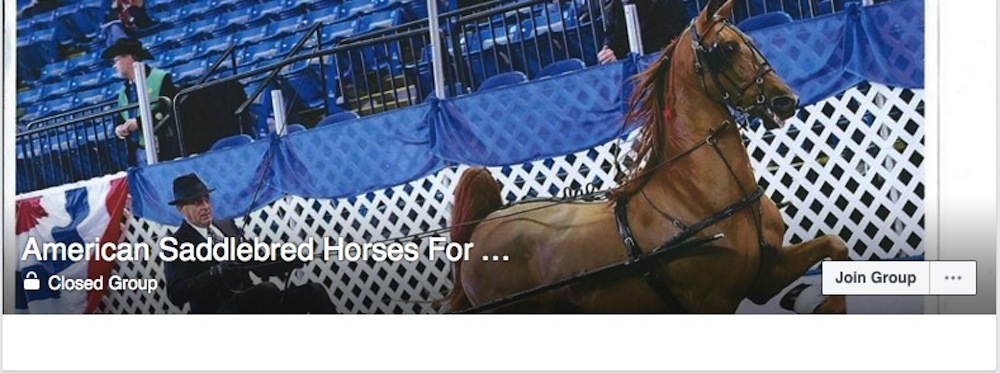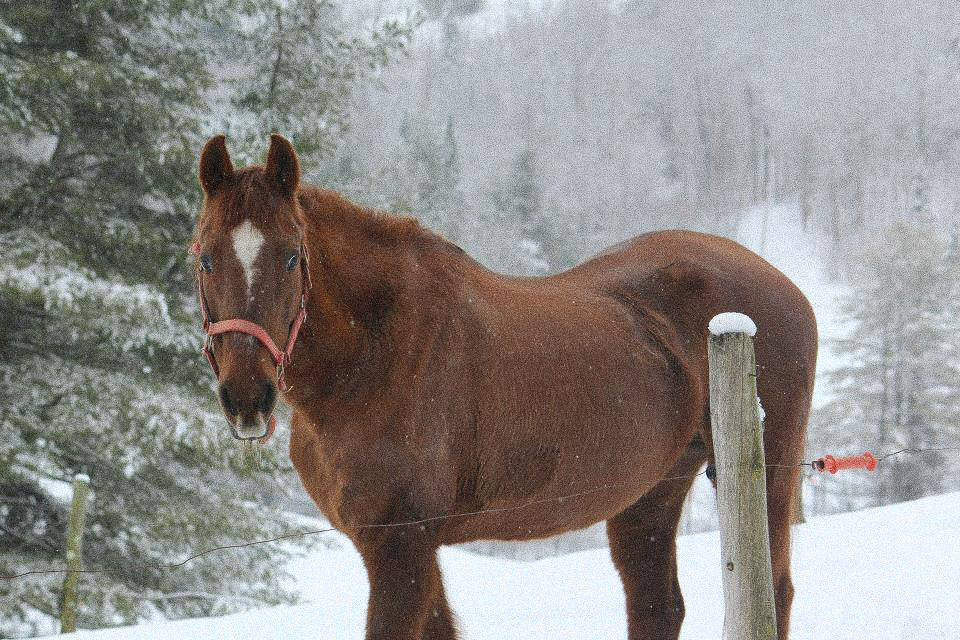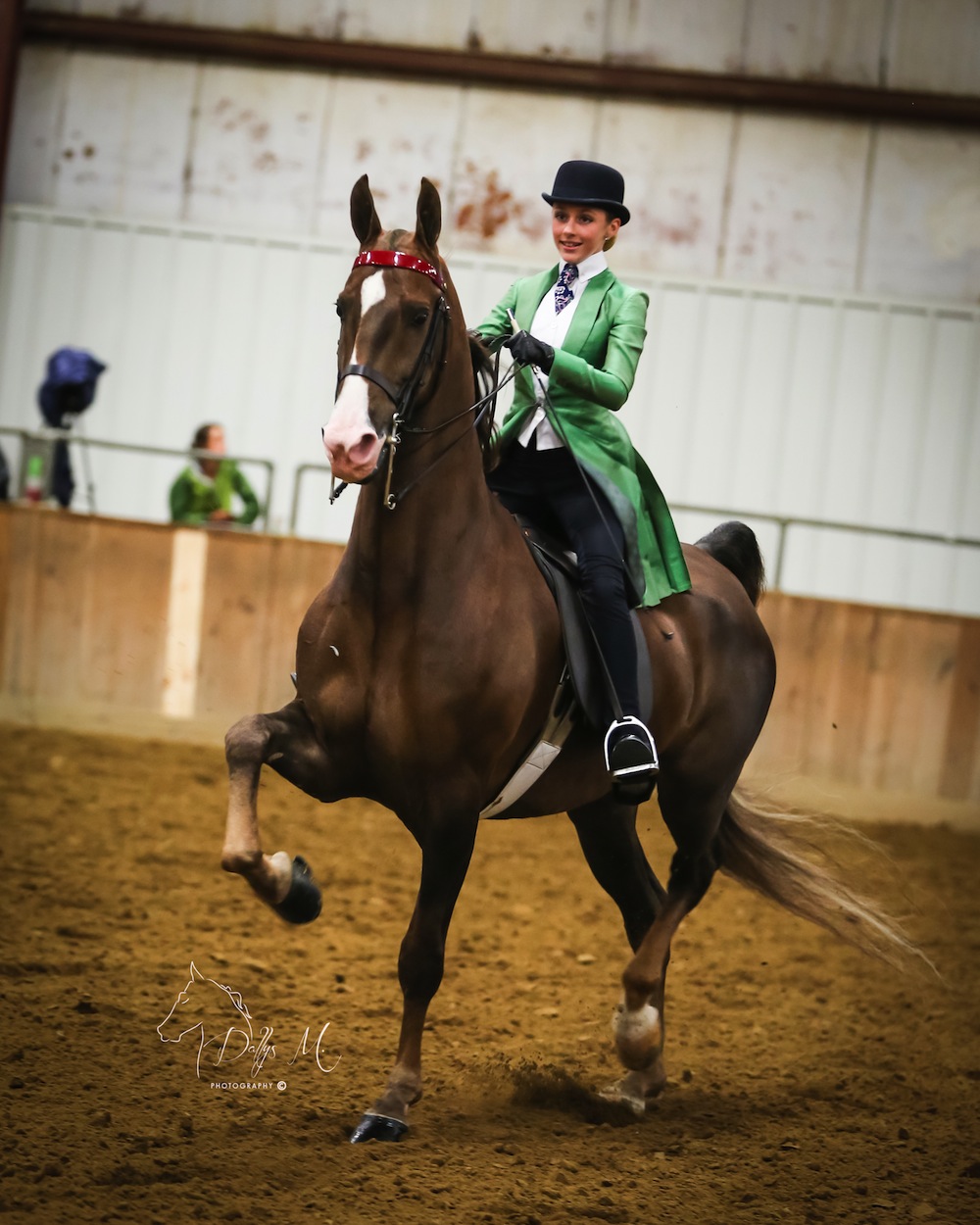 Strutting out of Freedom Hall and down Stopher Walk, tricolor in your pocket and carnations draped over your horse’s neck, walking on Cloud 9 from the victory pass. It’s just you and your trainer, and twenty people following you back to the barn wanting to buy your horse. That is the dream.
Strutting out of Freedom Hall and down Stopher Walk, tricolor in your pocket and carnations draped over your horse’s neck, walking on Cloud 9 from the victory pass. It’s just you and your trainer, and twenty people following you back to the barn wanting to buy your horse. That is the dream.
It has happened, and will continue to happen on occasion at shows across the country, but it is not the case with most horses for sale in today’s market. More often than not, sellers spend weeks, months or even years trying to find just the right buyer for their horses, through word of mouth, print advertising, and now even online and through social media. The process can be overwhelming, but with a little thought and effort, you can market your horse well, find the right buyer, and send him off to his new happy home with something close to the asking price in your pocket.
Honesty goes a long way.
Though many things have changed in the past ten years when it comes to selling horses, the importance of honesty has not. Marketing your horse truthfully and tactfully is the best way to get that horse sold in the least amount of time. Using the phrase “he has a motor that will go all day long” as code for “runaway” is not truthful. Saying that she is a sweetheart who loves kisses and scratches, as a way to say “too sore to be ridden but would love to eat all of the hay in your barn,” isn’t either. Being honest about your horse can and will not only help you to sell this one, but could potentially bring that buyer back to you for their next purchase.
Keeping your sales page up to date.
Facebook, Twitter, Instagram, and all of the social media sites are great ways to keep your barn and sale horses fresh on potential customers’ minds, but it seems that many farms have forgotten about the good old fashioned website. All too often, when you click on a “For Sale” tab on a farm’s website, you are dismayed to find that it’s the same horses that were on it a year ago. You know for a fact that the horse listed sold to your friend’s barn, yet they’re still listed on the site. Or even that the horse has changed to the pleasure division, but is still listed with no mane and their Three-Gaited show shoes on.
It is hard enough for trainers to just keep up with phone calls, text messages, private messages, and emails when you’re trying to sell a horse, but a well maintained website can answer a lot of those questions all at once. “Got any gaited horses for sale?” “I have five! Head on over to www.SaddlebredsRock.com and click on our sales list. Let me know which one you want to come try out.” Simple. Back to jogging the road pony.
Though most horse trainers probably did not take Internet Coding 101 at Barn University, a little investment in hiring a webmaster can go a long way to keep bringing people to your website. For those that are more of the DIY type, there are numerous low cost website template companies out there (web.com, wix.com, ehost.com to name a few) that even the least computer savvy person can use to create and maintain a beautiful website. Keeping an up-to-date web page with a “For Sale” tab can help to drive more people to check back for new listings on a more regular basis.
Wording your sales pitch on Social Media.
 Most trainers and owners who are placing ads with magazines know that they have a limited amount of space to grab your attention before you flip to the next page. A photograph of a victory pass, a list of wins for the season so far and “Inquiries Invited” is usually enough to get a potential buyer to call or email about the horse. When you’re chatting with another trainer at this weekend’s show about an equitation prospect that is doing lead changes well, you’ll probably walk over to the warm up ring to watch them work the horse. No fuss, no need for a long explanation of the horse’s daily schedule, just watching a horse work.
Most trainers and owners who are placing ads with magazines know that they have a limited amount of space to grab your attention before you flip to the next page. A photograph of a victory pass, a list of wins for the season so far and “Inquiries Invited” is usually enough to get a potential buyer to call or email about the horse. When you’re chatting with another trainer at this weekend’s show about an equitation prospect that is doing lead changes well, you’ll probably walk over to the warm up ring to watch them work the horse. No fuss, no need for a long explanation of the horse’s daily schedule, just watching a horse work.
As much as everyone probably hates to admit it, social media groups have become one of the most common ways to market sales horses because they are free and reach a large audience. Many barns will advertise their horses on groups like “Saddlebreds for Sale” on Facebook and on their farm’s Facebook or Twitter account. The major issue with it, though, is that there is no limit on how long a post can be and spell check is almost non-existent. If a potential buyer has to click on the “see more” on a post and it opens up in a new window because it is a 1,600 word long run on sentence, most people are going to just keep scrolling to the next horse. As a seller, you want to create a buzz around your horse, not write a dissertation on that horse’s entire life, what he eats, what temperature he likes his water to be and heaven forbid you should wear anything orange around him!
Editing for correct grammar and punctuation is just as important as limiting your post to major points about the horse. Most people will be looking for location, age, potential divisions and possibly a little bit about personality. It is also helpful to put some type of price tag on the horse; not the exact number but “Priced under $10,000” is a lot more likely to get you the right type of potential buyer than having to answer thirty private messages about a $60,000 horse from people looking for one at $5,000.
A picture is worth a thousand words. Really, it is!
This is where honesty in advertising really comes in to play. You could type that your three-year-old with a neck a mile long is a fire-breathing dragon under saddle, but the picture you choose to accompany this ad with is of her loose in a field, probably 100 yards away, with no halter on and dreadlocks in her tail. “Buy her now or get beat by her later.” This really does not work. Now, switch that picture to a professionally shot image of her trotting above level with no action devices or blinkers and her neck stretching to the heavens, and you’ve got something to talk about.
 When you are photographing your horse for a sales ad, keep the tack simple and keep your apparel appropriate. Nothing screams “keep scrolling” more than white sneakers and a tank top. And potential buyers (trainers and savvy horse owners) can always spot when someone has tried to Photoshop the stretchies out of a photo. Chester the Haflinger could probably trot level with stretchies on, but as much as everyone loves Chester, that doesn’t mean he’s going to be competitive in the Open Park division.
When you are photographing your horse for a sales ad, keep the tack simple and keep your apparel appropriate. Nothing screams “keep scrolling” more than white sneakers and a tank top. And potential buyers (trainers and savvy horse owners) can always spot when someone has tried to Photoshop the stretchies out of a photo. Chester the Haflinger could probably trot level with stretchies on, but as much as everyone loves Chester, that doesn’t mean he’s going to be competitive in the Open Park division.
Though it can be a challenge in the cold winter months, try to utilize the great outdoors as much as possible. If that is not an option, choose some place with a solid background so that the horse will really stand out in the photo and not the box fan cords or pony hanging its head over the stall door.
The most major faux pas is the blurry screen shot taken from a video on a cell phone. It doesn’t matter if you are trying to sell your horse for $2,500, $25,000 or $250,000. If you have taken the horse to a show recently, regardless of how they placed, purchase a photo from an official show photographer. For a very small percentage of your asking price (usually $50-125) you can get the web image from Doug Shiflet, Howie Schatzberg, Casey McBride, Terry Young or whomever was photographing the show to use in your social media ads as well as on your own website.
If your horse is a prospect just starting under saddle, a broodmare, or an at home pleasure horse, there are plenty of ways to get a professional image of your horse at your farm. Finding a local photographer with an interest in horses is a great way to get a few solid shots of your horse as well as allowing a budding amateur photographer to test out their skills. Many farms also have photo shoot weekends for the kids (and adults) to have portraits with their horses, so adding a quick ten minute session for some sale horses is not too expensive since the photographer is already there. If you have a lot of new sale horses, hiring one of the “big guys” to come to the farm becomes a lot more feasible. By providing professional quality images, you are telling your potential customers that you are serious about the quality of your horse and that you are willing to invest in the promotion of that animal.
Some of the same common sense principles apply to videos. If someone has requested a video, they want to determine if it is worth the drive to your farm or next show to ride the horse. A quick 1:30-3:00 long video is usually more than enough time for someone to decide if they want to try your horse out. There is really no need to show an entire class at a horse show or post a twenty-minute practice ride. If the horse is being marketed as a pleasure horse, it is very important to show the transitions as well as the horse walking. Fully equitated horses should be videoed doing some sort of pattern. Five-Gaited horses should do something in the video other than rack. On the same level as the photographs, the video should be done in a professional manner with a very steady hand or a tripod (they actually do make those for cell phones now).
Whether you’re trying to sell a Louisville contender, a broodmare, an equitation prospect, or a back yard trail horse, marketing it honestly, thoughtfully and with quality photographs and good punctuation will help to draw potential buyers to your barn for this purchase and hopefully keep them driving to your farm with a trailer in tow.



